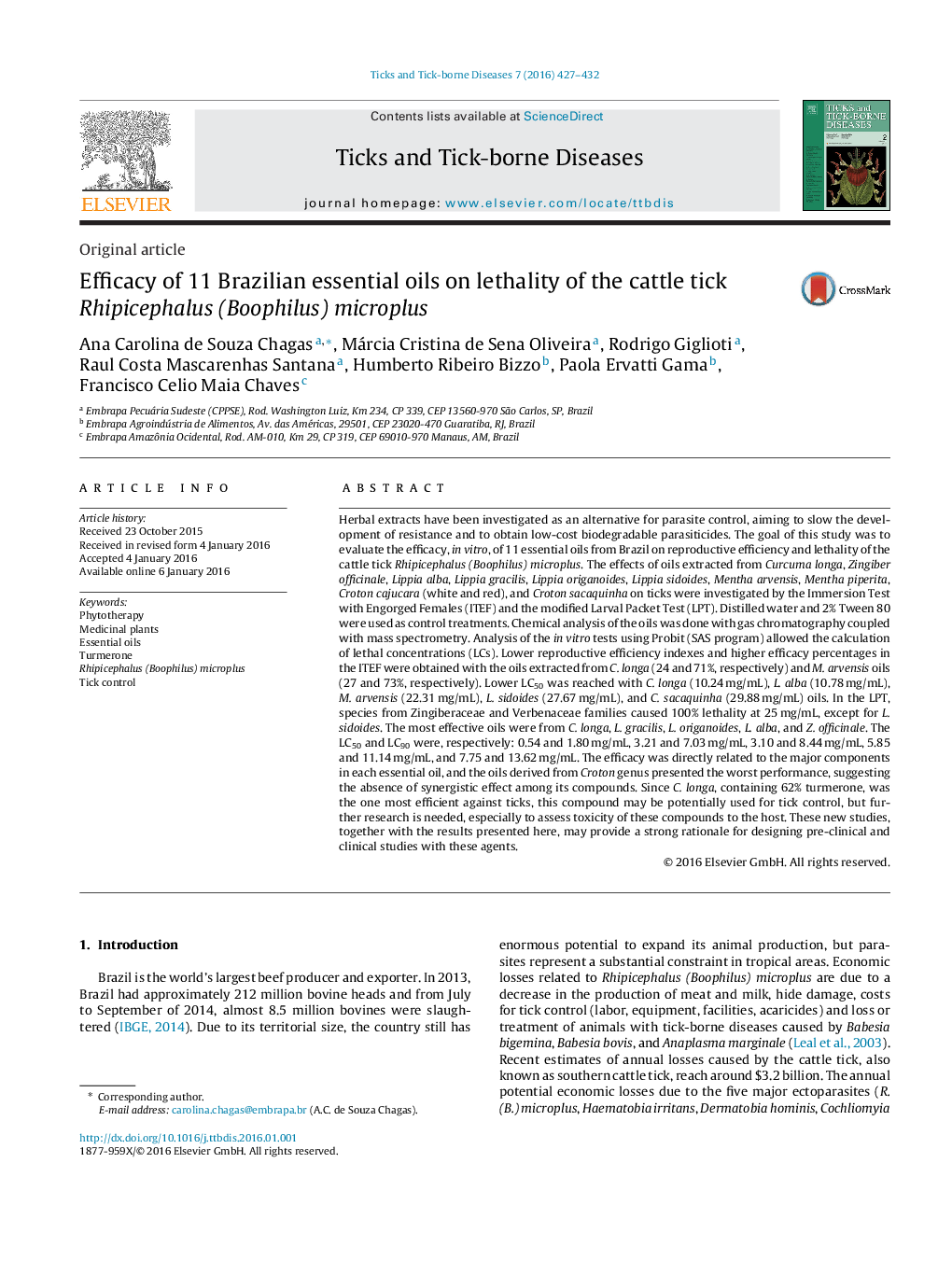| کد مقاله | کد نشریه | سال انتشار | مقاله انگلیسی | نسخه تمام متن |
|---|---|---|---|---|
| 2473898 | 1113100 | 2016 | 6 صفحه PDF | دانلود رایگان |
Herbal extracts have been investigated as an alternative for parasite control, aiming to slow the development of resistance and to obtain low-cost biodegradable parasiticides. The goal of this study was to evaluate the efficacy, in vitro, of 11 essential oils from Brazil on reproductive efficiency and lethality of the cattle tick Rhipicephalus (Boophilus) microplus. The effects of oils extracted from Curcuma longa, Zingiber officinale, Lippia alba, Lippia gracilis, Lippia origanoides, Lippia sidoides, Mentha arvensis, Mentha piperita, Croton cajucara (white and red), and Croton sacaquinha on ticks were investigated by the Immersion Test with Engorged Females (ITEF) and the modified Larval Packet Test (LPT). Distilled water and 2% Tween 80 were used as control treatments. Chemical analysis of the oils was done with gas chromatography coupled with mass spectrometry. Analysis of the in vitro tests using Probit (SAS program) allowed the calculation of lethal concentrations (LCs). Lower reproductive efficiency indexes and higher efficacy percentages in the ITEF were obtained with the oils extracted from C. longa (24 and 71%, respectively) and M. arvensis oils (27 and 73%, respectively). Lower LC50 was reached with C. longa (10.24 mg/mL), L. alba (10.78 mg/mL), M. arvensis (22.31 mg/mL), L. sidoides (27.67 mg/mL), and C. sacaquinha (29.88 mg/mL) oils. In the LPT, species from Zingiberaceae and Verbenaceae families caused 100% lethality at 25 mg/mL, except for L. sidoides. The most effective oils were from C. longa, L. gracilis, L. origanoides, L. alba, and Z. officinale. The LC50 and LC90 were, respectively: 0.54 and 1.80 mg/mL, 3.21 and 7.03 mg/mL, 3.10 and 8.44 mg/mL, 5.85 and 11.14 mg/mL, and 7.75 and 13.62 mg/mL. The efficacy was directly related to the major components in each essential oil, and the oils derived from Croton genus presented the worst performance, suggesting the absence of synergistic effect among its compounds. Since C. longa, containing 62% turmerone, was the one most efficient against ticks, this compound may be potentially used for tick control, but further research is needed, especially to assess toxicity of these compounds to the host. These new studies, together with the results presented here, may provide a strong rationale for designing pre-clinical and clinical studies with these agents.
Journal: Ticks and Tick-borne Diseases - Volume 7, Issue 3, April 2016, Pages 427–432
